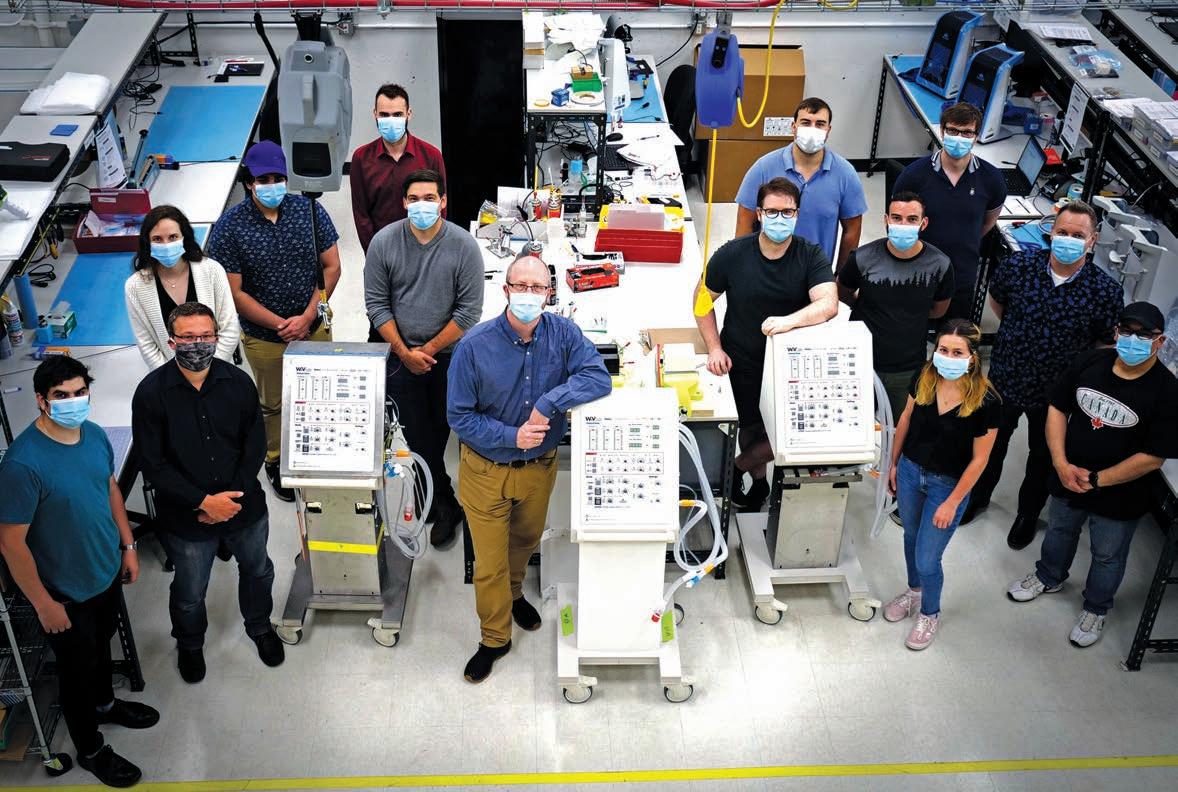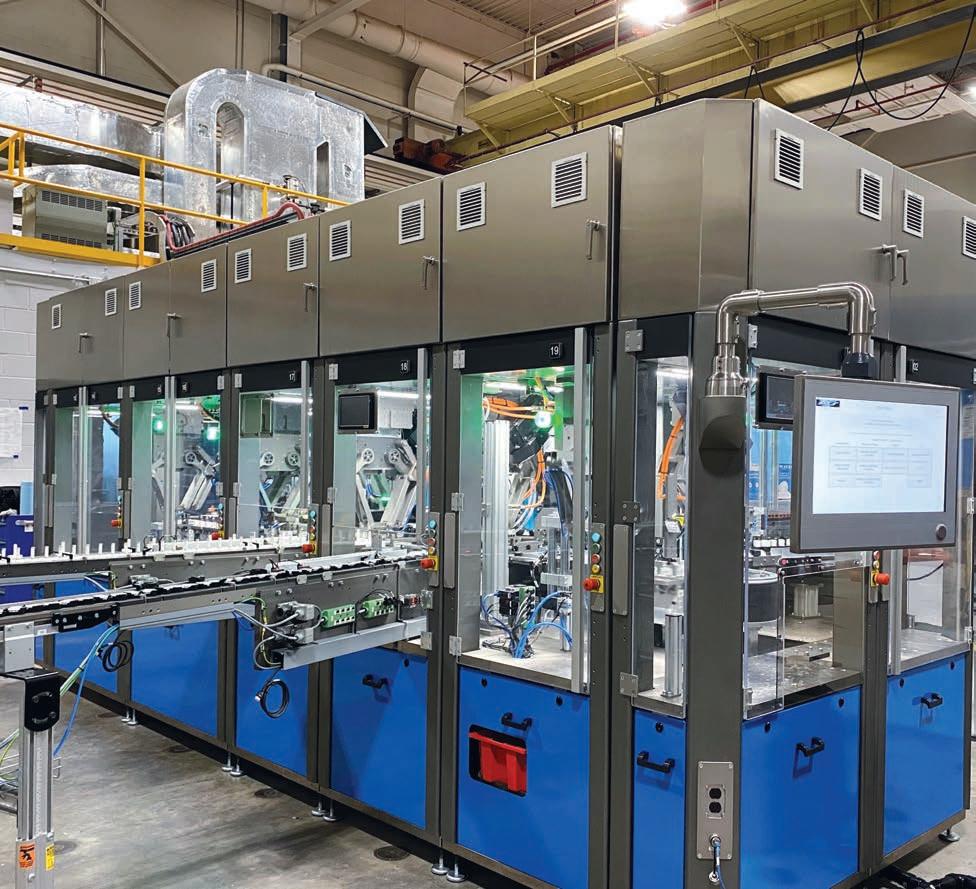MOTION CONTROL
FEATURE
ORCHESTRAL AUTOMATION
ATS Automation’s modular Symphoni technology combines the speed of continuous motion with the precision and flexibility of robotic assembly. BY MIKE MCLEOD When Pfizer and BioNTech announced that their experimental COVID-19 vaccine had tested 90 percent effective in November, hopes immediately lifted that the end of the pandemic was in sight. Provided their vaccine and others pass the remaining regulatory hurdles, the road ahead will depend on a manufacturing and logistical effort on a global scale. Given that COVID vaccines will likely require two shots, estimates put the number of doses needed at 700 million injections for the U.S. alone. To meet that challenge, the U.S. government launched Operation Warp Speed, an initiative to produce millions of vaccine doses, plus the necessary medical supplies to do the job. As part of that effort, a U.S. medical device manufacturer awarded ATS Automation a $20 million contract in September to design and build several automated manufacturing systems capable of mass-producing safety syringes as quickly as possible. Unlike the automation giant’s previous machine builds, this order will incorporate a new technology called ATS Symphoni. According to Peng Cau, VP Sales, Emerging Markets and Symphoni at ATS Automation, this digital assembly technology enables the design of machines that combine the high-speed of continuous motion with the precision and flexibility of indexing or robotics-based assembly. “To explain Symphoni, a helpful metaphor is to imagine you are on a train and I’m on a platform @design_eng_mag
A high-speed automation system based on ATS ’s Symphoni digital manufacturing technology
and I want to hand you a bottle of wine,” says Cau. “If we do that by indexing, the train stops and I hand you the bottle. It’s very gentle and precise but there’s a lot of lost time in starting and stopping. With continuous motion, the train doesn’t stop so I hand off the bottle at full speed but there’s the danger of smashing it.” “With Symphoni, the train doesn’t slow down or stop; instead, I speed up, like Superwoman, to match the train’s velocity and gently hand over the bottle. That synchronized motion is made possible by the Symphoni OS software and the system’s overall architecture.”
In addition to speed and precision, another core differentiator is the technology’s flexibility. In place of custom machines designed to make one or a limited set of products, a Symphoni-based system is composed of multiple modular building blocks, sub-systems that each perform a set operation. By adding, removing, rearranging and/or re-tooling the modules, systems can be quickly configured and reconfigured. As a result, Symphoni systems are multi-purpose, Cau says, flexibly adapting to assemble new products, as markets change or the need arises.
November/December 2020 DESIGN ENGINEERING 15






